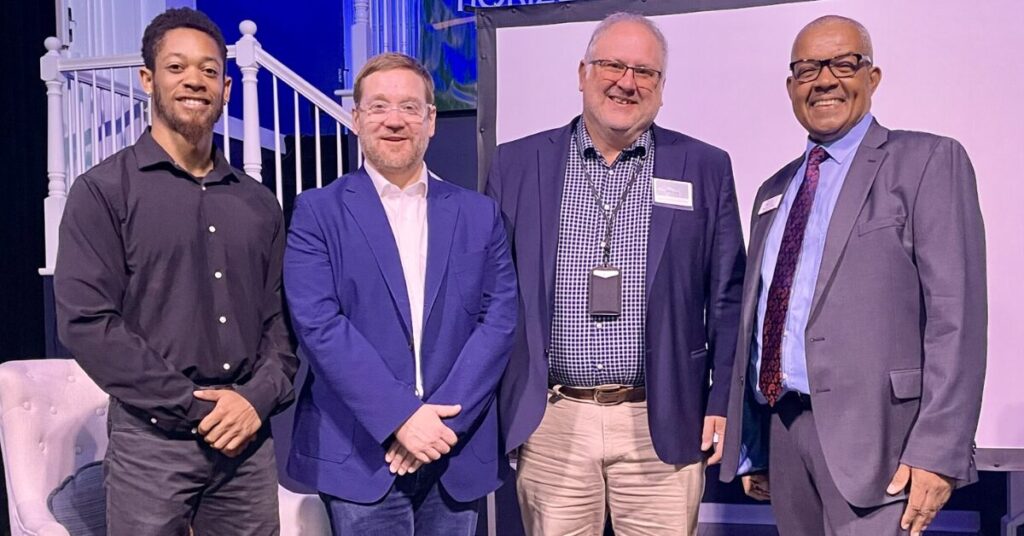The economy is coming back to life. Is the region's workforce prepared to cash in on the opportunities?
by Shari Held
With the negative press the economy has generated over the last few years, it's easy to overlook the positives Northwest Indiana has to offer – the Dunes, the casinos, the steel mills, a great road and rail infrastructure and power sources.
“Northwest Indiana has some of the greatest assets in the Midwest, and I'm going to argue, some of the best in the nation,” says Don Babcock, director of economic development for NIPSCO. “Years ago we had a strong economy and our economy is coming back now because of those assets. As the region becomes stronger, the opportunities for great paying jobs will be on the rise.”
The big question is: Will the workforce be prepared and ready to meet the needs of a rebounding economy?
A report on hiring in Northwest Indiana by The Center of Workforce Innovations projects nearly 27,000 job openings in the next five years. The biggest concentration will be in health care and transportation, distribution and logistics followed by manufacturing and construction and the trades. Many of these jobs will require special skills, and that presents a problem.
“Even with the serious unemployment we have, throughout the state and the country, there are a number of jobs now that are staying open far too long because employers can't find workers with the right skills,” says Michael Baird, a Valparaiso city councilman.
To ensure workforce development is ready to meet the demands of the future, Northwest Indiana educators, employers, economic developers and local politicians banded together to form the Regional Education and Employer Alliance for Developing Youth (RE2ADY) about three years ago. Its focus is to implement programs that will not only prepare students academically, but also teach them the soft skills needed for success and make them aware of the opportunities in their own backyard.
“We want kids to know that they don't have to go to the East Coast or the West Coast or Texas to get really good jobs,” Babcock says.
The emphasis isn't just on the young, however. And for good reason. The U.S. Bureau of Labor Statistics estimates that by 2022, the number of workers age 65 and older will reach 13.2 million. Many of them will be better educated (in terms of college degrees) than their younger counterparts.
“The bulk of the employees of the future are already in the workforce today,” says Mark Maassel, president and CEO of Northwest Indiana Forum. It's simple demographics. The number of students graduating from high school every year is a very small number compared to the number of adults that are working. We are going to see an ever increasing need for continued learning, lifelong learning.”
Lifelong learning is here to stay, although the concept may meet resistance, especially from those already in the workplace. “The idea is we will teach people how to learn because we don't know what the future is going to bring and what specific skills people are going to need,” says Ralph Rogers, vice chancellor for academic affairs, Purdue University Calumet. That involves teaching people how to ask the right questions and how to find solutions and become problem-solvers. “That's the skill set people want, and that's the basis for preparing people for jobs we don't even know exist yet,” he adds.
Getting School Kids RE2ADY
“The goal of RE2ADY is to make sure that by 2025, 60 percent of the workforce in Northwest Indiana will have the kind of post-secondary education required to be successful in today's world,” Baird says.
Schools are attacking the issue on all sides, beginning with assessment of students' skill sets in middle school to provide the programming that best fits their needs.
One such program is Reality Store, a partnership between Merrillville middle schools and the local Chamber of Commerce. The hands-on program helps kids tie a job of their choice to a paycheck, showing them the real-life implications a career choice can have on their lifestyle. They are also given situations that they have to work with: marriage, children, divorce, illness. Students go from station to station where chamber members – bankers, mortgage brokers, insurance agents, Realtors and apartment renters, car dealers, hospital workers and lawyers – give them a reality check about costs and “what-if” situations.
“They have to figure out how they are going to spend their money and how far that money will go,” says Tony Lux, superintendent, Merrillville Community School Corp. “If they run out of money they have to go back and make other decisions.”
“Then, the freshman year we've put a major emphasis on helping students understand how important it is to graduate from high school and get that high school diploma,” Lux says. “And that what they do as a freshman has great implications for being able to meet that goal to get that high school diploma. We also go through a four-year plan for identifying their career choices.”
The School City of Hobart implemented a program called Career Pathways at the high school level to give students a head start on choosing and preparing for their careers. Students can earn credit toward four-year college degrees, two-year associates degrees or certifications. Students can explore different health care careers at the schools of Human Services and Health and Natural Sciences, earn up to 15 hours of college credit at the School of Pre-engineering and Industrial Technology or earn their CCNA (Certified Cisco Network Associate) from the Cisco Academy in the School of Business and Information Technology. The school also operates its own cookie business and preschool.
“We offer various electives across the different schools,” says Peggy Buffington, superintendent, School City of Hobart. “The programs are innovative, challenging and rigorous. They broaden students' horizons because they are experimenting and discovering where their passions lie.”
Both Merrillville and Hobart participate in WorkKeys, a national job skills assessment system that measures students' skills in relationship to what employers want. Students are awarded a certificate at a certain level and each level is matched to specific jobs. “The better their skills, the more jobs they qualify for and the higher the level of their certificate,” Lux says. “This has really meant a lot to students in terms of having something that demonstrates their skill level when they apply for a job.”
WorkKeys is used by major Northwest Indiana employers. For example, Buffington notes that ArcelorMittal automatically interviews people who have a bronze certificate. “We are starting to see dividends of our work,” she says. “At Merrillville and Hobart High Schools, well over 90-percent of our kids were eligible for a workplace certificate. That's pretty amazing.”
According to Buffington, only one-third of students make it past their freshman year at four-year institutions, but offering courses for college credit can help turn that statistic around. “If students can get nine to 12 credit hours while in high school, their chance of success is increased because they have experienced the rigor of a college curriculum while in the familiar, nurturing environment of their high school,” she says.
Purdue Calumet and Indiana University Northwest have partnered to offer a unique dual-credit program to high school students. High school teachers and university faculty work closely together to ensure the quality of instruction. The program has received recognition from the U.S. Department of Education and other schools nationwide.
“Many colleges have a dual credit program in partnership with high schools,” Purdue Calumet's Rogers says. “What is quite a bit different with ours is the way we track data and that we are doing real-time quality control throughout the semester. We think it works very well because of its focus on quality and not just on credits.”
A Shot in the Arm
Purdue Calumet requires every student who entered school in the fall of 2008 and after, to take two courses in experiential learning – internships, co-ops, research projects, Capstone projects. “We believe in preparing our students for what comes after college,” Rogers says. “To understand what will be expected and what the options are.” This program is also doing well. One student working at a Northwest Indiana hospital developed a color-coded patient banding system that is being adopted statewide and is being considered for adoption nationwide.
It's not all about four-year college degrees, however. Manufacturing is far from dead and two-year degrees can sometimes be obtained through apprenticeship programs. “There's a strong partnership between the International Brotherhood of Electrical Workers here in Northwest Indiana and Ivy Tech,” Maassel says. “When you become a journeyman, a fully qualified electrician through the union apprenticeship program, you also have a two-year certification from Ivy Tech. U.S. Steel, Mittal, British Petroleum and NIPSCO, have all worked with Ivy Tech to create programs that helps provide students with the skill sets necessary to go to work in those kinds of industries.”
“We are really trying to align the education, workforce development and economic development together to make sure that they are all working hand-in-glove,” says Linda Woloshansky, president and CEO at the Center of Workforce Innovations. “We are continuing those alignments (from RE2ADY) into the adult workforce phase and hopefully right into jobs.”
One new adult education program is GED Plus, which combines a high school diploma with some type of post-secondary education such as welding or bookkeeping or a certified nursing assistant. It debuted this year. “Getting a high school diploma or a GED isn't enough anymore,” Woloshansky says. “They are able to acquire that GED and walk away with a marketable skill that they can apply immediately. It's a little early to tell what the absolute results will be, but so far the folks who are engaged in this are thrilled.”
Moving Forward
Maassel anticipates the trend for new jobs and new roles to continue along with the core manufacturing, petroleum refining, steel production and construction jobs. “I think entrepreneurial skills will grow in significance,” he says. “They are the companies that are growing most rapidly and employing the most new people.”
Rogers cites the potential the transportation, distribution and logistics sector has for the region, but also emphasizes the importance of entrepreneurs. “The future is going to be for those people who try to solve problems; people who see opportunities and take risks,” he says. “What we are looking for is a larger set of risk takers and access to capital. If we have those things, we can grow in many different ways.”


